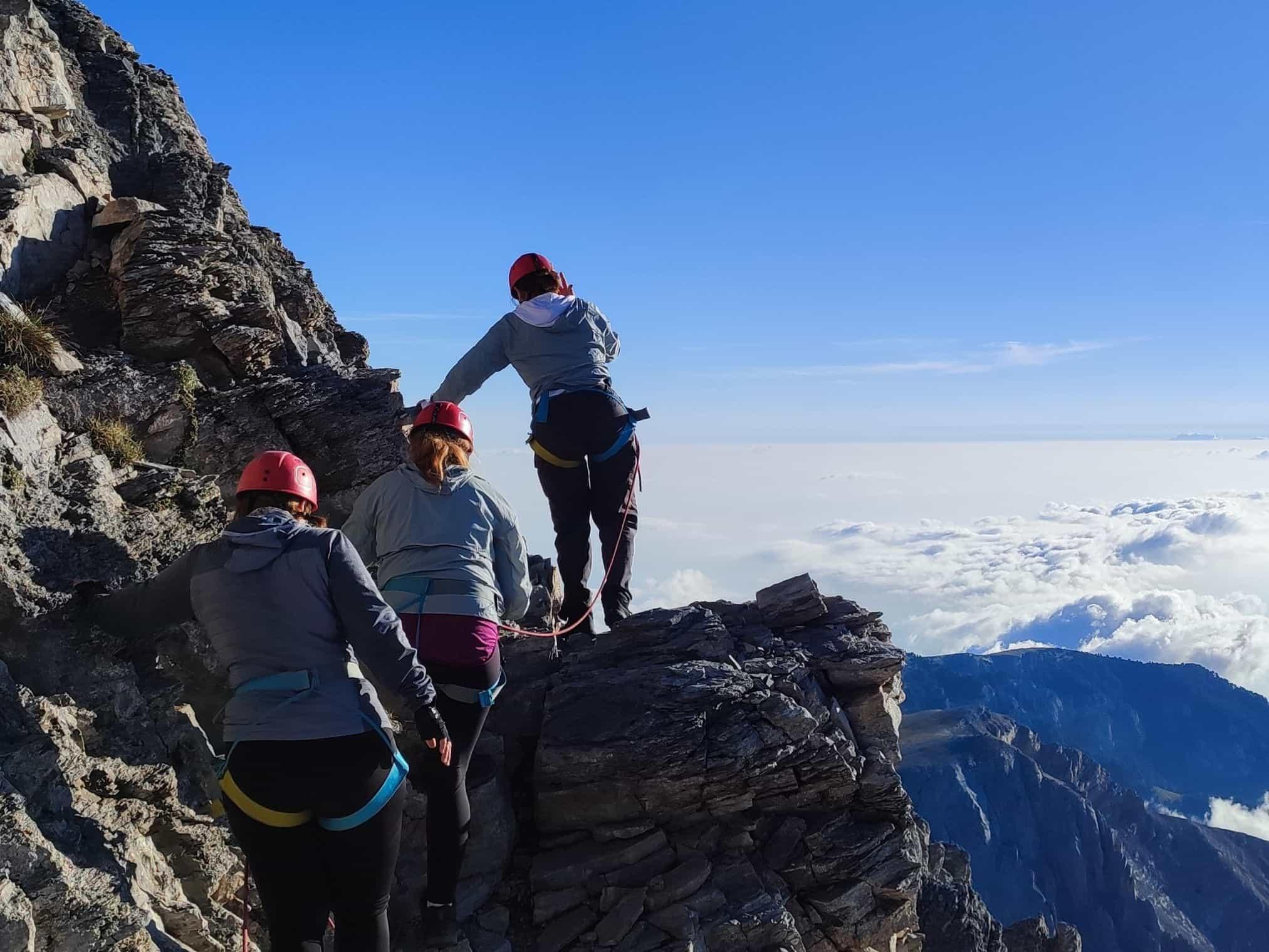Mount Olympus is the highest mountain in Greece, standing 2,917m (9,572ft) high in northern Greece, on the border of Thessaly and Macedonia. The hiking season here is relatively short, with the best time to climb Mount Olympus being between June and early October, when the trails are free of snow, and the mountain huts are open.
Within this stretch, the best month to hike Olympus really depends on whether you prefer warm, busier conditions, or cool and quiet trails in Autumn.
The mythology of Mount Olympus makes this a storied mountain, famous as the home of the 12 mythological Greek gods.
"Then it's very important that you read the kit list and bring the right equipment," says Athanasios Pitenis, a mountain guide who grew up at the foot of Olympus, and who has climbed the mountain over 100 times. "When we give our pre-trip briefing, we'll inform everyone about the weather and temperature and we'll check their equipment too. If you need something, you can then rent it. It's very important to be 100% prepared for the mountain. Without the right equipment you can't go up. It's always safety first."
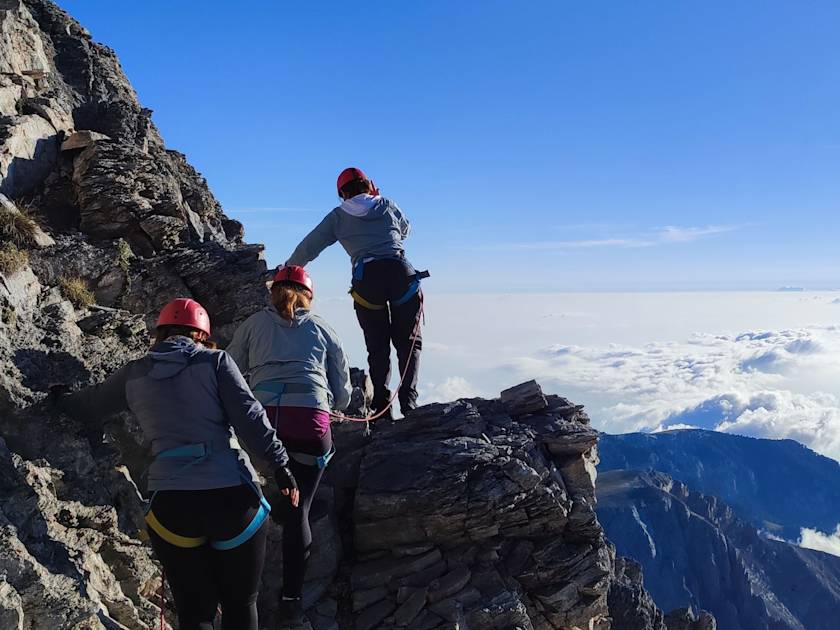
The mythology of Mount Olympus makes this a storied mountain, famous as the home of the 12 mythological Greek gods. The climb to the top typically takes two days, with an overnight stay at a refuge en route. Here’s when to visit to give yourself the best chance of achieving what ancient poets and philosophers said was not possible for us mortal humans - summiting Mount Olympus.
The climate of Mount Olympus
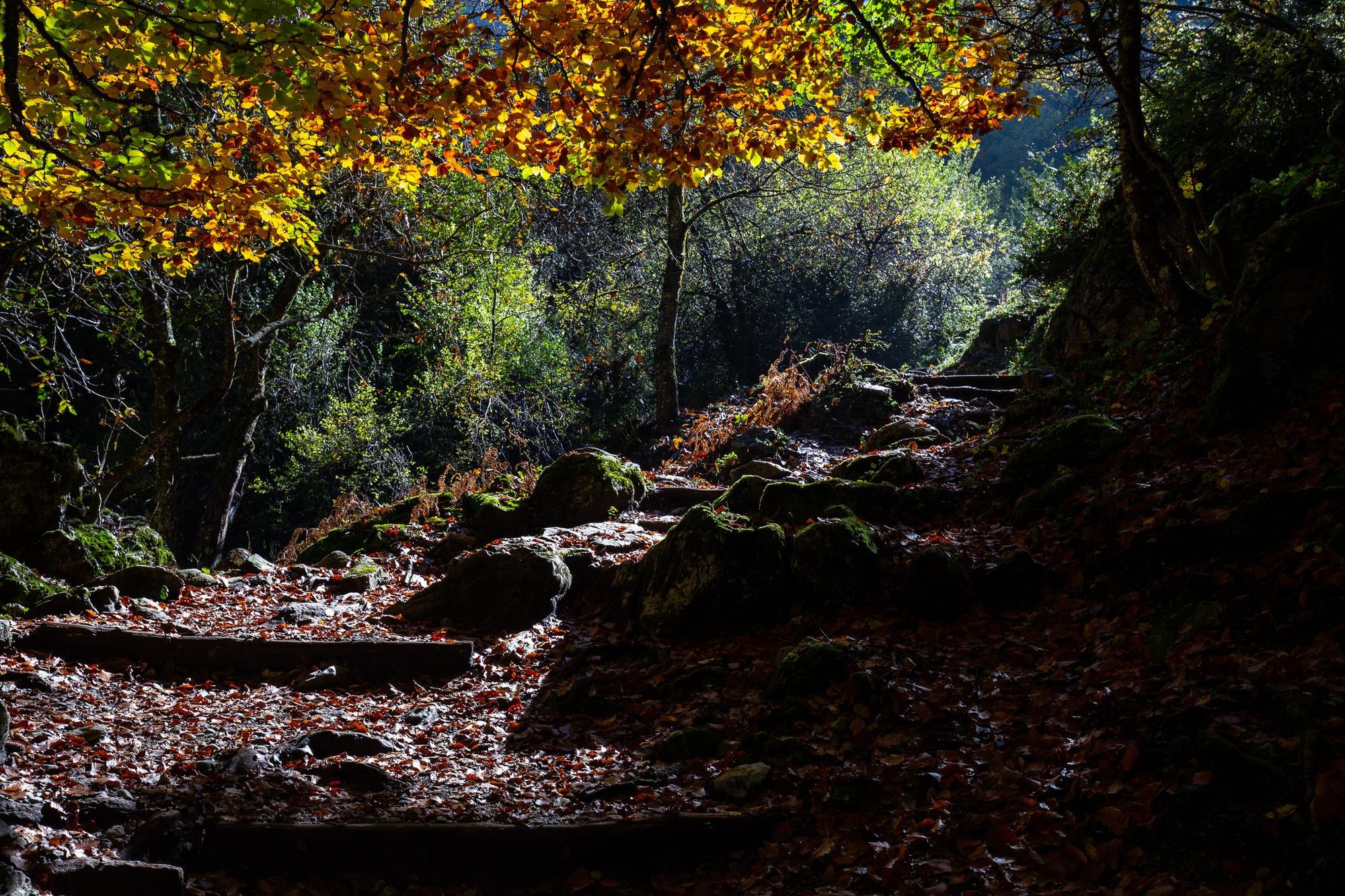
Mount Olympus has a Mediterranean climate, so it tends to be hot and dry in the summer, with cold and cloudy, and often snowy or freezing, in the winter.
Hiking in peak season is achievable for keen mountain hikers, though a guide is strongly recommended, particularly owing to the scramble required to reach Mytikas, the highest peak. Climbing in winter, on the other hand, is a mountaineering endeavour. It is extremely challenging, often requiring technical equipment like crampons and certainly experience of winter climbing.
The temperatures on Olympus range from -10°C to 10°C in winter to 0°C to 20°C in summer. It often snows throughout the winter, though it can rain in summer too. Over the 2,000m (6,561ft) mark, the mountain is actually snow-capped for around nine months of the year, from September to May.
Month-by-Month Guide to Hiking Mount Olympus
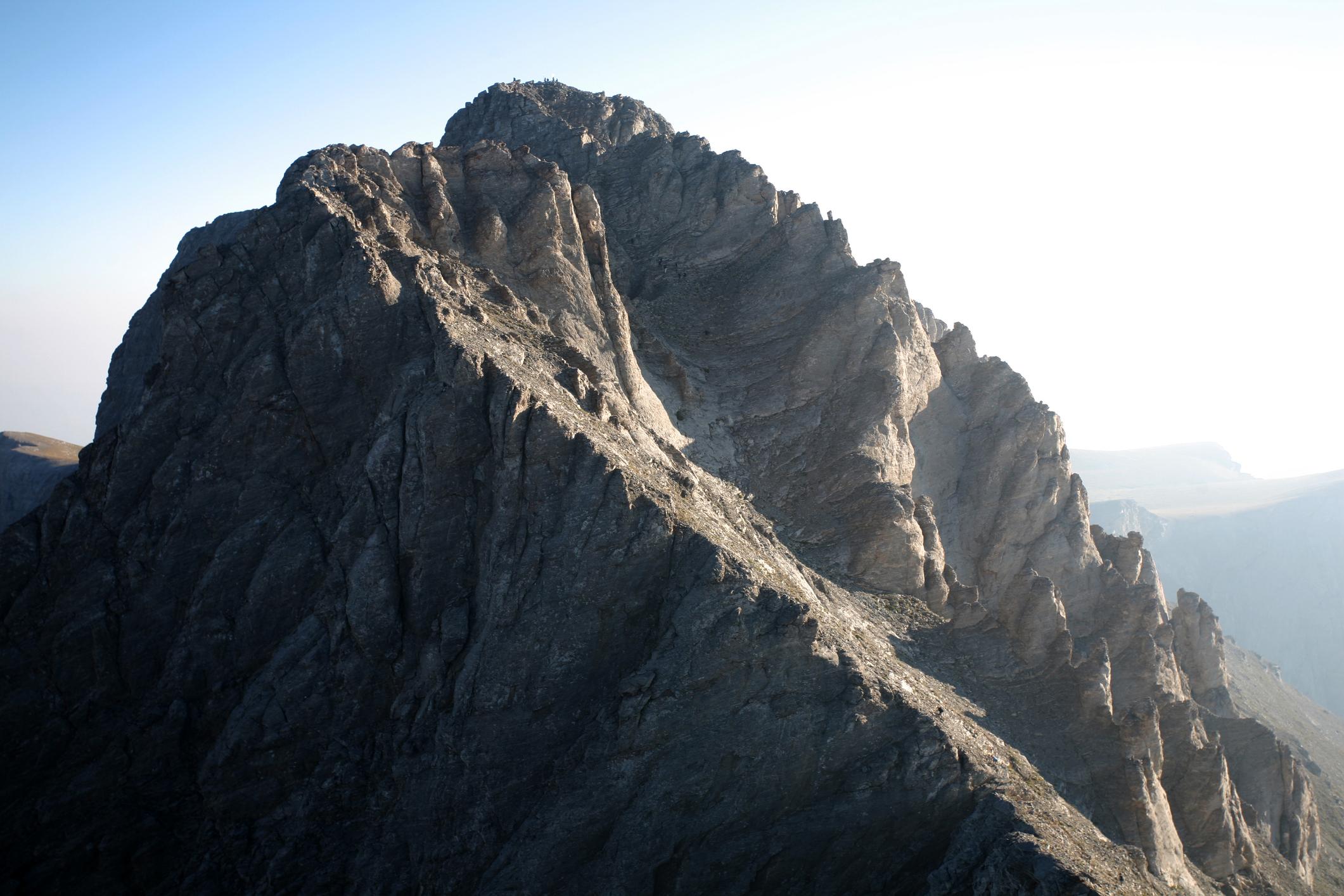
Magic floats around the trails of Mount Olympus. This is a place of myth; where the low rivers are connected to stories of fallen lovers, the dense pine forests were once said to be a physical barrier between mortal beings and the heavenly realm, and the high peaks are guarded by golden gates, beyond which sit the gods who rule the cosmos.
That might all just be myth, but it brings the scenery to life - as do the seasons, which change the colour of the trees and cast their differing lights over the mountain tops.
In Greek mythology, the seasons themselves came into being from the grief of Demeter - the harvest goddess - after her daughter Persephone was abducted by Hades and taken to the underworld. Persephone was able to return for half of the year, and it was said that Demeter’s sorrow while Persephone was away brought fall and winter - while her joy at the return of Persephone to the Earthly realm each year brought life and light.
On Olympus, each month brings a different mood, from the early snows melting in spring to the autumn hush as crowds disappear. Here’s what to expect each month (with the obvious caveat that weather anomalies are common, and conditions unpredictable):
Hiking Mount Olympus in May: The snow on the lower slopes of Olympus has melted away by May, and so wildflowers and greenery burst through. Higher up, however, the snow often remains on peaks and ridges, making it perilous for hikers. The mountain huts are usually still closed, and conditions are not suitable for beginners.

Hiking Mount Olympus in June: By June, the snow is retreating and the mountain huts have opened their doors. Temperatures are pleasant. Think cool mornings to warm afternoons. Trails are less crowded than high summer, but there may still be snow. By the end of June, though, people are usually hiking to Mytikas, the summit of Olympus.
Hiking Mount Olympus in July: July is peak hiking season here. The mountain and huts are busty with trekkers visiting from around the world - and booking in advance is crucial. The days are long and warm - sometimes very hot - with stable weather perfect for reaching the summit. If you like the buzz of fellow hikers, this is the time for you.
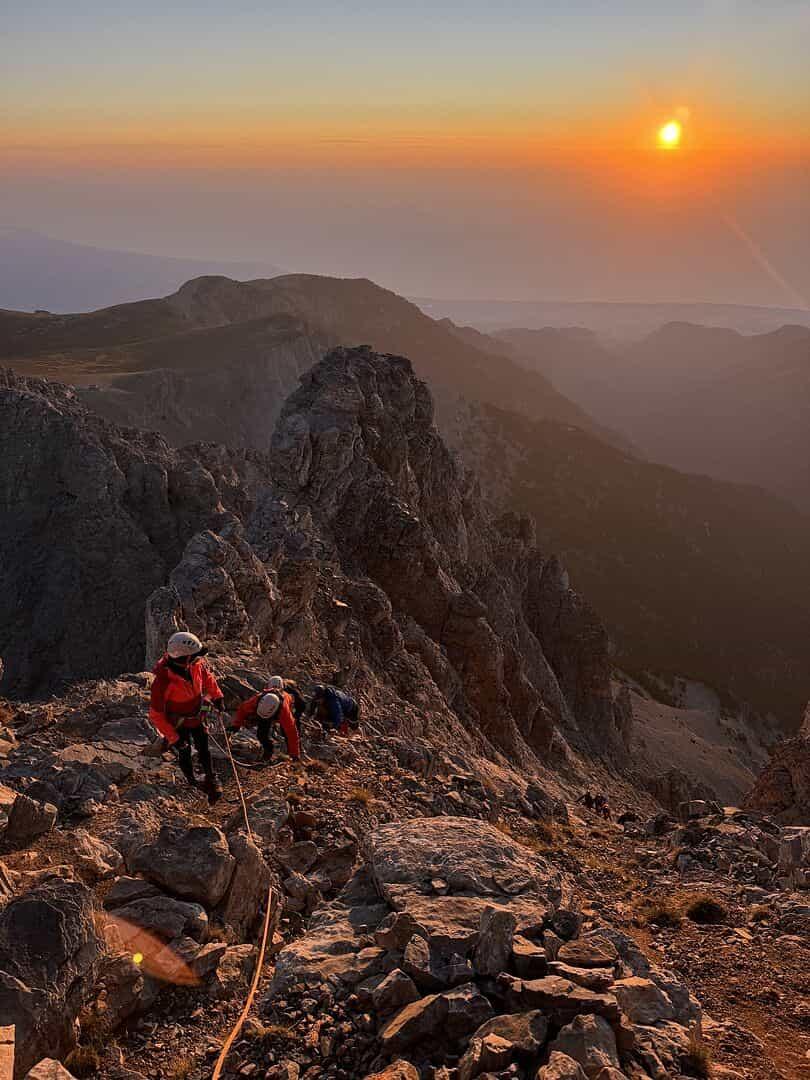
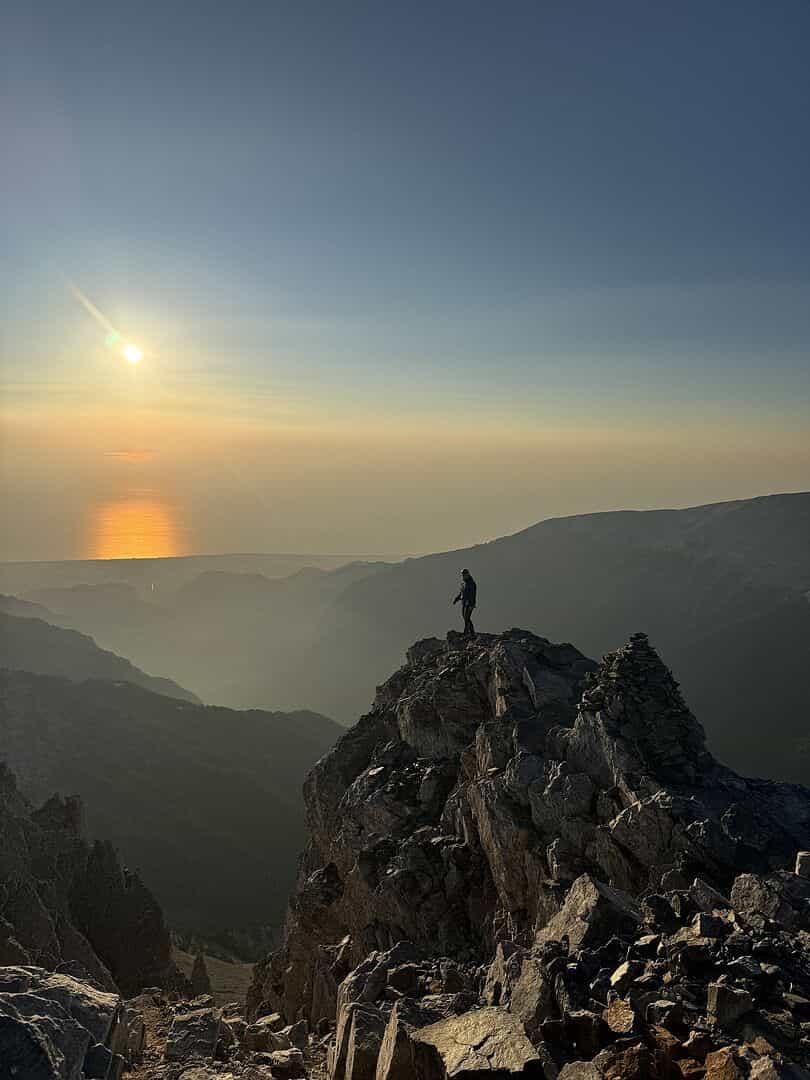
Hiking Mount Olympus in August: August is the busiest month of the year on the mountain. Similar to July, the trails are full and the huts and trails busy. The only key difference is August tends to be hotter than July, so you may start your hiking earlier.
Hiking Mount Olympus in September: September is shoulder season - a sweet spot for many, when the summer crowds have thinned. Huts remain open, and the weather stays stable, with cooler temperatures that make long climbs more comfortable. Autumn colours begin to creep into the forests. Rain and mist are more frequent.
Hiking Mount Olympus in October: The end of the hiking season, October brings crisp air, autumn foliage, and fewer people yet. It’s an atmospheric time to hike, but conditions can change quickly. Storms and early snowfall are possible. The huts often close by mid-October, so you’ll be looking at hiking as early in the month as possible.
Weather on Mount Olympus by Season
- Spring (April-May): Snow lingers on the higher slopes, making summits inaccessible. The lower trails bloom with wildflowers and early rain.
- Summer (June-August): Peak season for hiking, when warm weather dominates. This is when you’ll have clear, hot days and busy trails.
- Autumn (September-October): Shoulder season. Cooler, crisper days make for excellent hiking, though mists and early snow can cause trouble.
- Winter (November-March): Best left to mountaineering familiar with ice axes, crampons and long, tough days out on freezing cold mountains.
Wildlife and scenery by season
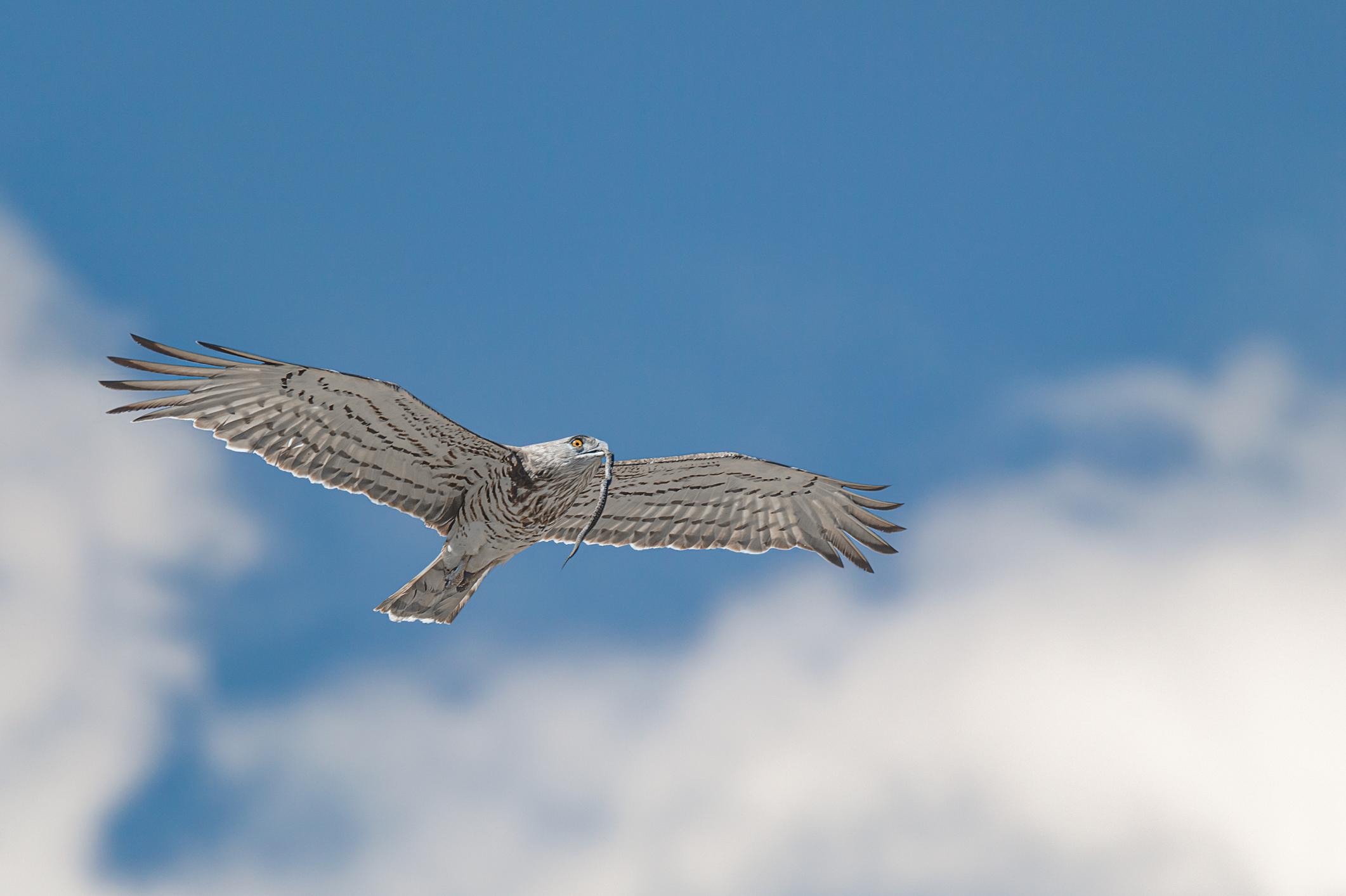
Mount Olympus sits at the heart of the aptly-named Olympus National Park. The park is home to over 17,000 plant species, which represents roughly a third of Greece’s flora, and there’s a whole lot of fauna to see - from wolves and chamois to falcons and eagles.
Bird species include year-round residents like horned larks, alpine accentors, rare wallcreepers and 9 out of the 10 species of woodpecker you can find in Greece. There are several breeding pairs of golden eagles and peregrine falcons that live on Mount Olympus year-round, while migratory birds of prey like short-toed snake eagles and European honey buzzards can be seen from spring through to autumn.
Balkan chamois are often seen in alpine meadows in summer. Roe deer and red squirrels can be spotted year-round. Wolf and bear sightings are generally rare.
- Spring: Bright wildflowers like purple primrose, red poppies and endemic Erysimum olympicum, a small yellow flower, pop up in the green. Amongst the forest greenery and rushing rivers, you’ll also see bright lilies and orchids.
- Summer: Lush green meadows spread and clear skies offer sweeping views over the Aegean Sea from the higher reaches. The purple Olympus violet is a small purple flower which blooms in summer. Alpine meadows are generally covered with herbs like oregano and thyme, giving the park a distinctive, delightful scent.
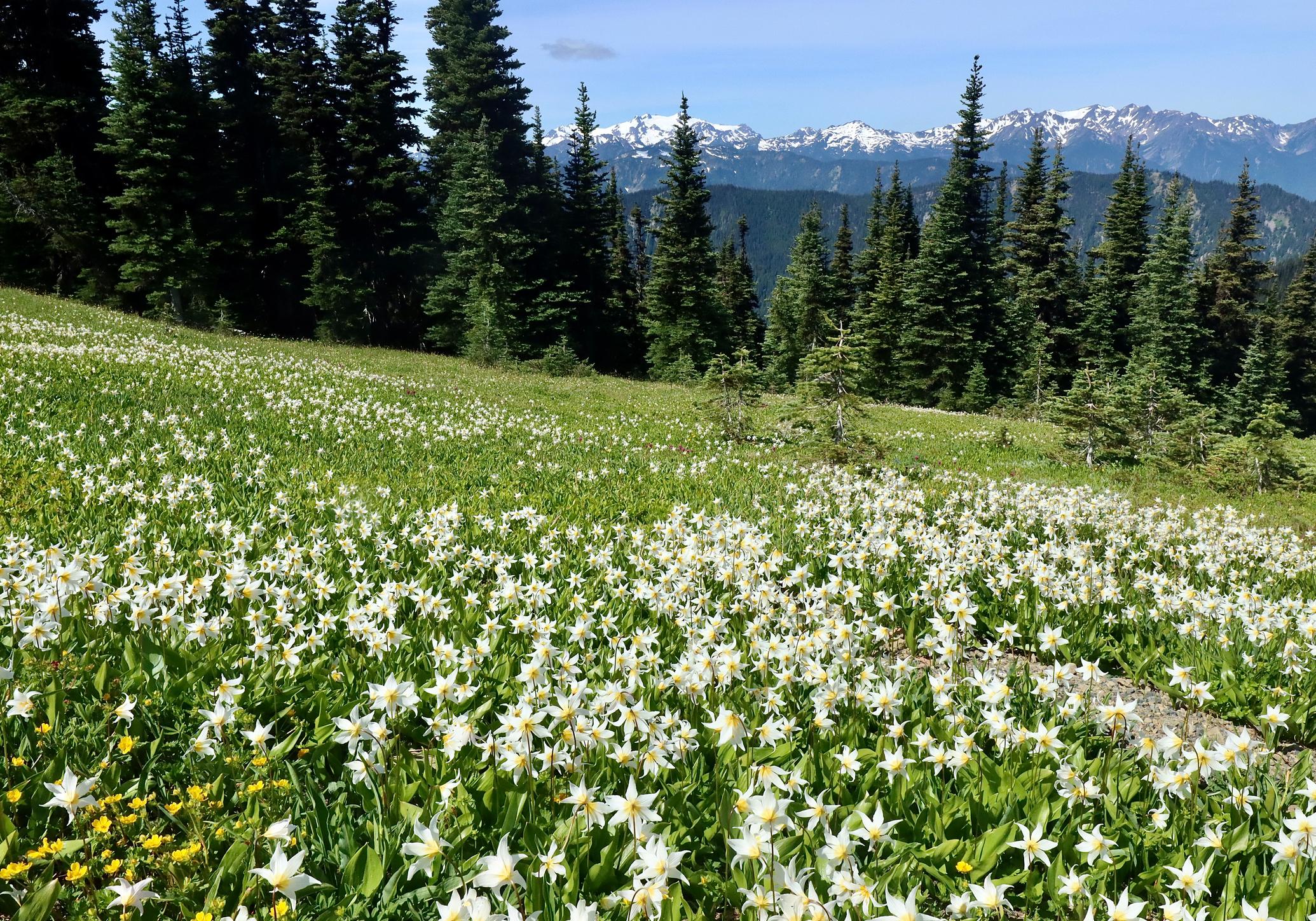
- Autumn: A blaze of reds, oranges, and golds moves through the deciduous trees, dotted amongst evergreens. Deer and boar are more active.
- Winter: The high plateaus are a snow-covered wilderness, where silence dominates. But below them, the evergreen pines and firs provide a standout green, their branches weighed down by snow.
What is it like to climb Mount Olympus in winter?
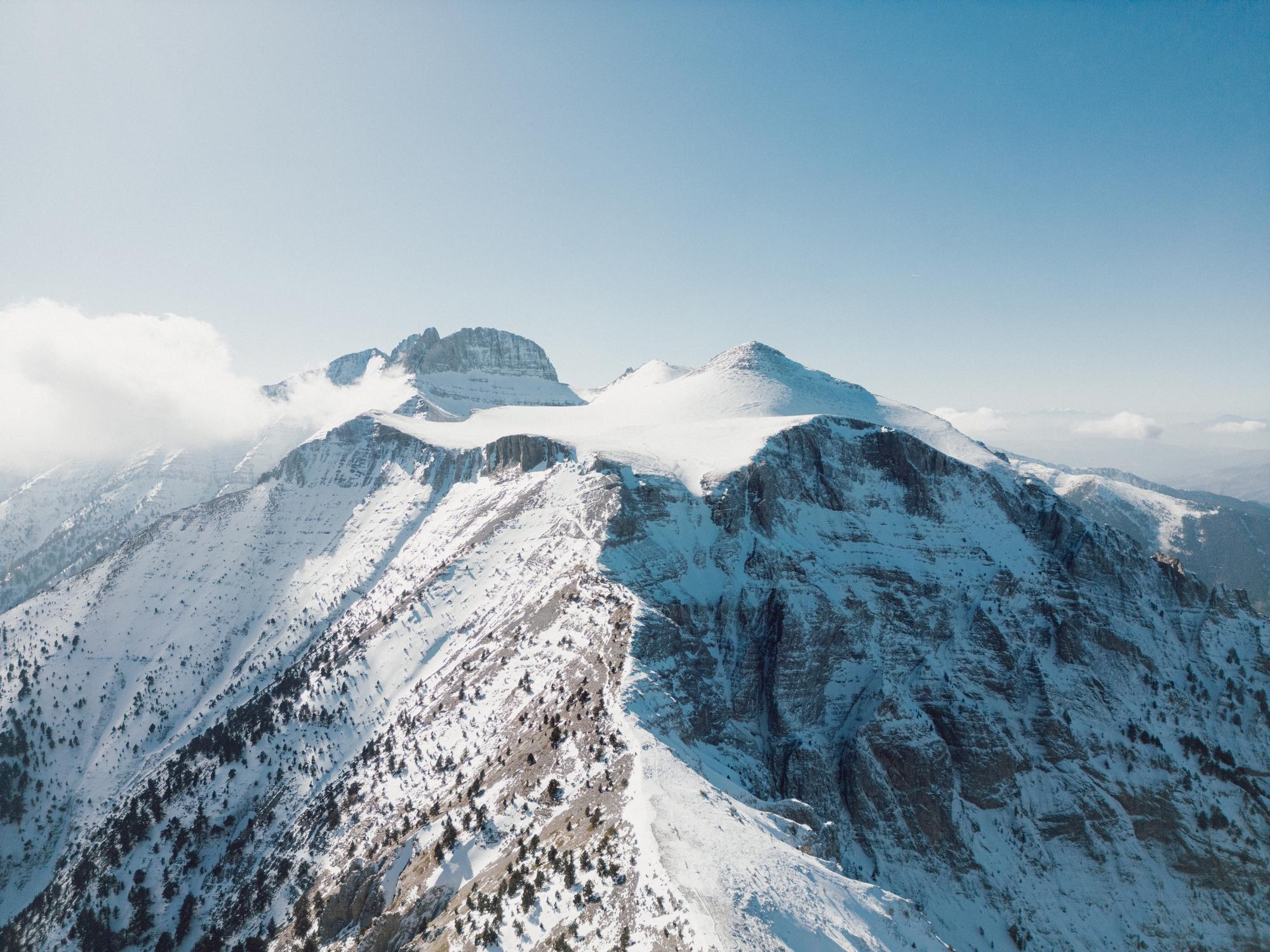
In winter, the higher reaches of Mount Olympus are not a place for everyday hikers. Trails above the treeline are buried under snow and the already challenging ridgelines are iced. Temperatures plummet well below freezing. This is dangerous terrain.
Even during summer, reaching the top of Mount Olympus requires a tricky scramble. When things are frosty, icy, and the trails are hidden under snow in winter, this becomes a significantly more perilous endeavour. Ice axes and crampons are usually required.

You can climb Mount Olympus in winter, but you will need to have experience using winter mountaineering equipment. You should be in good physical condition, have a guide, and have experience of a full day’s worth of climbing - over 10 hours in one day.
Olympus in winter is best admired from below for most; as snow-draped peaks rise dramatically above the surrounding villages. For experienced alpinists, though, winter ascents can be unforgettable - provided they’re done with respect and preparation.
Seasonal FAQs about climbing Mount Olympus
Is Mount Olympus open year-round?
Yes, technically the trails are always there and open on Mount Olympus, but access depends heavily on the season. From June to early October, the paths are clear, huts are open, and conditions are ideal. Outside of these months, snow dominate high up, and refuges often shut.
When are the mountain huts open on Mount Olympus?
There are eight mountain refuges around the main routes on Mount Olympus. High huts like Spilios Agapitos and Giosos Apostolidis Refuge are open from mid-May or June until mid-late October, depending on the weather. In winter, they’re closed (though sometimes you can stay if you contact the owner), so think carefully about your plans and plan in advance. Always check weather conditions.
Do you need a guide to climb Mount Olympus?
Unless you are a confident mountaineer, a guide is strongly recommended on Mount Olympus. If you’re experienced on alpine terrain, and with scree and scrambling, it is possible to climb independently in summer. The ascent of Olympus is always a tricky one, though, involving a graded scramble. Local guides add safety and a knowledge of conditions, so we would always recommend one. A good guide can also contribute rich storytelling about the mythology of the mountain.
Inspired? Climb Mount Olympus in Greece, over three nights!

